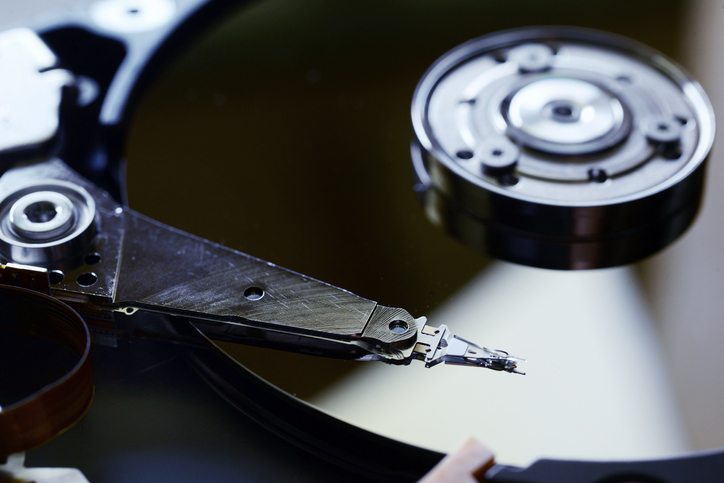
UPDATED:
Several electronics companies have settled a class action lawsuit that accuses the companies of conspiring to the fix prices of optical disk drives. The settlement, which recently added three defendants to boost the settlement fund over $180 million, affects only indirect purchasers of the optical disk drives. Indirect purchasers buy finished products, while direct purchasers buy components to construct finished products.
Optical disk drives allow users to read and write digital data to optical disks that include CDs and DVDs. Manufacturers of consumer electronic devices, such as desktop and laptop computers, install optical disk drives to enhance device performance.
The class action settlement consolidates other cases filed against the same electronics companies. Consolidation of the class action lawsuits occurred after the United States Department of Justice conducted a criminal investigation into the optical disk drive industry. A California federal judge approved more than $120 million of the current settlement fund on July 21, 2016. Some of the electronics companies named in the class action lawsuit include Sony, NEC Corp., Panasonic Corp., and Hitachi-LG Data Storage. PLDS, TEAC, and Pioneer joined the defendant class to bring the settlement fund to its current amount
Updated: What You Need To Know
According to the class action settlement website www.OpticalDiskDriveAntitrust.com, “Class members of the indirect purchaser optical disk drive settlement include residents of Arizona, California, District of Columbia, Florida, Hawaii, Kansas, Maine, Massachusetts, Michigan, Minnesota, Missouri, Montana, Nebraska, Nevada, New Hampshire, New Mexico, New York, North Carolina, Oregon, Tennessee, Utah, Vermont, West Virginia, or Wisconsin who, between April 1, 2003 and Dec. 31, 2008, purchased (for their own use and not for resale) one or more of the qualifying products.” Qualifying products include a computer with an internal optical disk drive, a stand-alone optical disk drive designed for internal use in computers, or an optical disk drive attached externally to a computer.
Class members have until July 14, 2017 to opt out of the class action agreement or contest the terms of the settlement. Class counsel says the settlement fund will distribute to eligible class members on a pro rata basis. You must file a claim form for the class action settlement by August 1, 2017. The case referred on the court docket as In re: Optical Disk Drive Antitrust Litigation, Case No. 3:10-md-2143-RS, in the U.S. District Court for the Northern District of California, San Francisco Division has a final hearing date set on September 7, 2017. Attorneys from the law firm Hagens Berman Sobol Shapiro LLP represent the class counsel. Because of the large number of defendants, the defense counsel comprises attorney from multiple law firms that include Winston & Strawn LLP, Ropes & Gray LLP, and Katten Muchin Rosenman LLP.
Previous Coverage:
July 21, 2016 marked an important date in class action lawsuit history, as a California-based federal judge approved a settlement worth more than $124 million that involved Sony, NEC Corp., Panasonic Corp., and Hitachi-LG Data Storage. Class members covered by the class action settlement lived in 23 different states and the District of Columbia. Plaintiffs that filed the class action lawsuit suit charged the electronics companies with engaging in a price fixing scheme to increase the prices of a wide variety of optical disk drives.
Optical disk drives represent electronic devices that allow users to access data from an optical disk, as well as write to an optical disk. The broad category for optical disk drives includes CDs, DVDs, and other types of computer software storage units. Consumers can find optical disk drives in camcorders, gaming consoles, and desktop computers.
The optical disk drive class action settlement consolidates several cases filed against the electronics companies, which occurred after consumers discovered the United States Department of Justice announced in 2009 that it planned to conduct a thorough criminal investigation into the optical disk drive industry. A judge merged the different optical disk class action lawsuits into one class action lawsuit in late 2010.
What You Need to Know
The key word in this case is “Indirect.” Class members comprise consumers who made indirect purchases of the optical disk drives. Indirect purchases refer to sale of an electronic device that contains an optical disk drive. A separate website is devoted to direct purchasers of the alleged price fixed optical disk drives. Class members who made indirect purchases lived in Arizona, California, District of Columbia, Florida, Hawaii, Kansas, Maine, Massachusetts, Michigan, Minnesota, Missouri, Montana, Nebraska, Nevada, New Hampshire, New Mexico, New York, North Carolina, Oregon, Tennessee, Utah, Vermont, West Virginia, and Wisconsin between April 2003 and December 2008.
Here are the products consumers used for personal use manufactured by the companies named in the class action lawsuits:
- Computer with an internal optical disk drive
- Optical disk drive designed for internal computer use
- Optical disk drive designed to attach to a computer externally
Class counsel estimates the payout per optical disk drive will be around $10. You must submit a Claim Form by July 1, 2017 that includes proof of purchase paperwork. Optical Disk Drive Antitrust Litigation, Case No. 3:10-md-2143-RS, in the U.S. District Court for the Northern District of California, San Francisco Division included the final hearing held on December 8, 2016. For more information about the class action settlement go to www.OpticalDiskDriveAntitrust.com
Counsel for the class members includes attorneys with Hagens Berman Sobol Shapiro LLP. The electronics companies worked with different law firms, as opposed to one firm representing the defense counsel.

